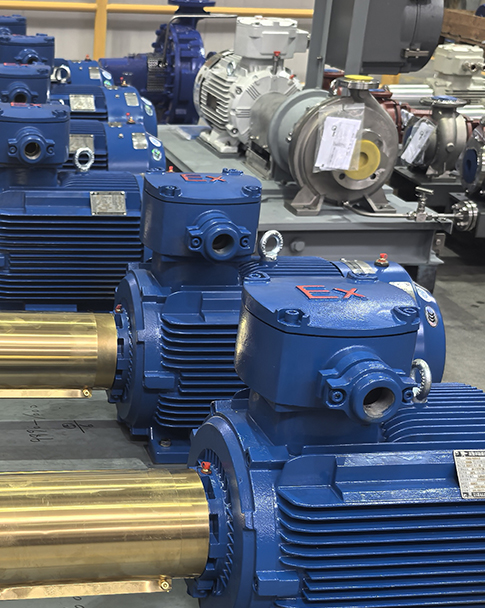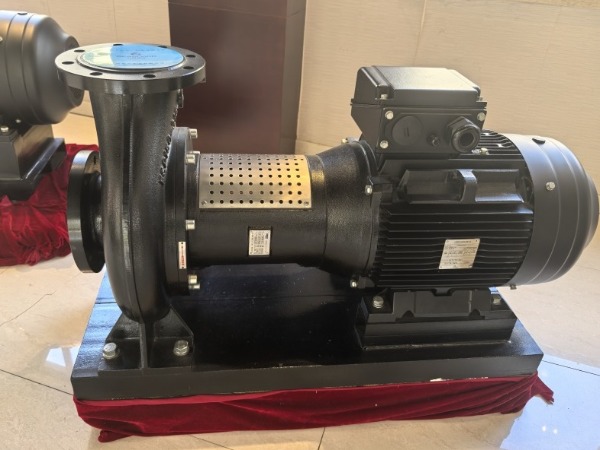

Large electric motors are at the heart of industrial operations. They power the pumps that move fluids and the conveyor belts that keep production lines moving. While their mechanical output is readily apparent, what's often overlooked is how efficiently they use energy.
Let's explore the importance of energy efficiency in large electric motors. From reducing operating costs to achieving environmental goals, the benefits are clear. Now, we'll take a look inside these devices. What exactly makes large electric motors so energy-efficient? And how can companies ensure each motor is operating at its maximum efficiency?
Understanding Motor Efficiency
Motor efficiency measures its ability to convert electrical energy into mechanical energy. No motor is perfect—some energy is always lost as heat, noise, or other effects. Energy-efficient (high-efficiency) motors are designed to minimize these losses.
For large electric motors, even small improvements in efficiency can result in significant energy and cost savings. For example, a 1% improvement in the efficiency of a 600-horsepower motor can save thousands of dollars annually.
The Role of Materials
One of the primary factors affecting motor efficiency is the quality of the materials used in its construction. High-efficiency motors typically utilize high-quality electrical steel in their stator and rotor cores. This advanced material reduces core losses, such as hysteresis and eddy current losses, by enhancing magnetic flux conductivity. This minimizes heat losses and improves the motor's overall energy efficiency.
Furthermore, these motors utilize high-conductivity copper windings and rotor bars, which typically have a larger cross-sectional area and are precision-wound. This design minimizes electrical resistance and reduces I²R losses (heat generated by current flowing through the winding and rotor conductors).
While these improvements may increase initial investment costs, they provide long-term benefits through reduced energy consumption, lower operating costs, and extended motor life.
Precision Manufacturing
Motor efficiency depends not only on material quality but also on manufacturing precision. By employing tighter mechanical tolerances and precise alignment of internal components, high-efficiency motors effectively reduce mechanical vibration and operating noise, ensuring consistently optimal electromagnetic performance.
A key design parameter is the air gap—the tiny gap between the stator and rotor. An excessively large air gap weakens magnetic coupling and reduces efficiency, while an excessively small air gap can lead to physical contact, resulting in mechanical wear and energy loss. Precision manufacturing processes ensure that the air gap is consistently maintained within the optimal range for optimal performance.
Thermal management is another crucial factor. High-efficiency motors employ advanced heat dissipation designs, such as enlarged heat sinks and optimized airflow channels, to effectively dissipate heat. This improved heat dissipation not only improves operating efficiency but also extends the motor's lifespan and reliability under continuous operation.
Advanced Motor Design
While traditional induction motors remain widely used, new motor designs are pushing the boundaries of efficiency. A typical example is the permanent magnet synchronous motor (PMSM), which incorporates permanent magnets embedded in the rotor. These magnets generate a constant magnetic field, eliminating the need for rotor current and significantly reducing energy losses.
PMSMs are particularly well-suited for applications requiring variable speed and/or high torque, such as pumps, fans, HVAC systems, and electric vehicles. While their initial cost is higher, their superior energy efficiency often makes the investment worthwhile.
Variable Frequency Drive Technology
The most effective way to improve motor efficiency often lies not in the motor itself, but in how it's controlled. Variable frequency drives (VFDs) enable motors to operate at variable speed, adjusting output power in real time to match load demand.
Without a VFD, traditional induction motors maintain a near-constant full speed regardless of load demand, resulting in significant energy waste when operating under partial load conditions. With a VFD, the motor can reduce speed based on actual demand, significantly reducing energy consumption. This feature is particularly beneficial in applications such as pumps and fans, where the power required scales with the cube of the speed.
System-Level Considerations
A motor isn't a standalone device; its energy efficiency is influenced by the entire system—from the power supply to the mechanical load. Therefore, a holistic, systems-level approach is essential.
Motor selection is crucial: an overpowered motor will operate inefficiently under partial load, while an underpowered motor may overheat and fail prematurely. Performing a load analysis ensures the motor is optimally matched to the application.
Regular maintenance is another key factor. Clogged filters, poor shaft alignment, or worn bearings can all reduce motor efficiency. Implementing a preventive maintenance program ensures that motors consistently operate at peak performance.
It's important to note that high-efficiency motors typically run at slightly higher speeds than less-efficient motors. When replacing an inefficient motor, it's crucial to thoroughly assess the impact on system performance.
Intelligent Monitoring and Predictive Maintenance
Advances in digital technology now make it possible to monitor motor performance in real time. Smart sensors track key parameters such as temperature, vibration, and current draw, providing early warning of potential problems.
This data not only enables predictive maintenance, enabling technicians to address issues before they occur, but also helps identify energy inefficiencies, such as motors operating at low loads or outside of their optimal operating range for extended periods.
By integrating motor data into broader energy management systems, companies can gain valuable insights and continuously optimize operations.
Building a Smarter Future
High-efficiency, large-scale motors are more than just a technological upgrade; they are a strategic investment in sustainability, reliability, and profitability. By focusing on high-quality materials, precision manufacturing processes, advanced design, and intelligent control systems, companies can unlock the significant value of their motor systems.
About the Author: Chris Stockton holds a Bachelor of Science degree in Mechanical Engineering from Clemson University in Clemson, South Carolina. A Fellow of the Institute of Electrical and Electronics Engineers (IEEE) and a Registered Professional Engineer, Stockton currently leads product management and technology for ABB's Large Motors and Generators business in the United States, based in Greenville, South Carolina.